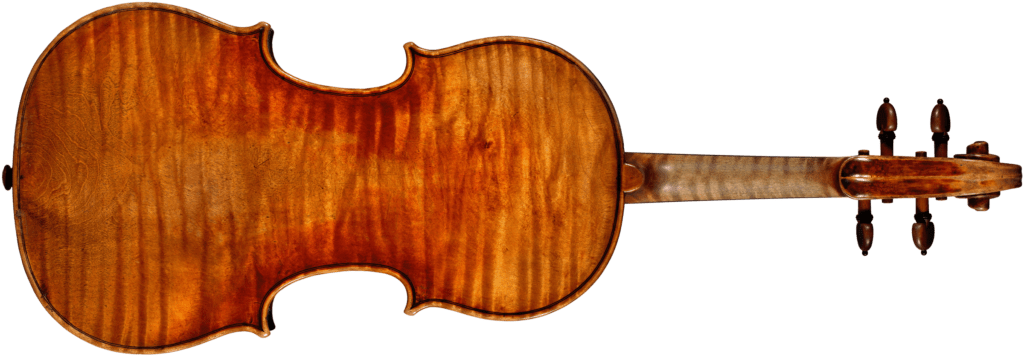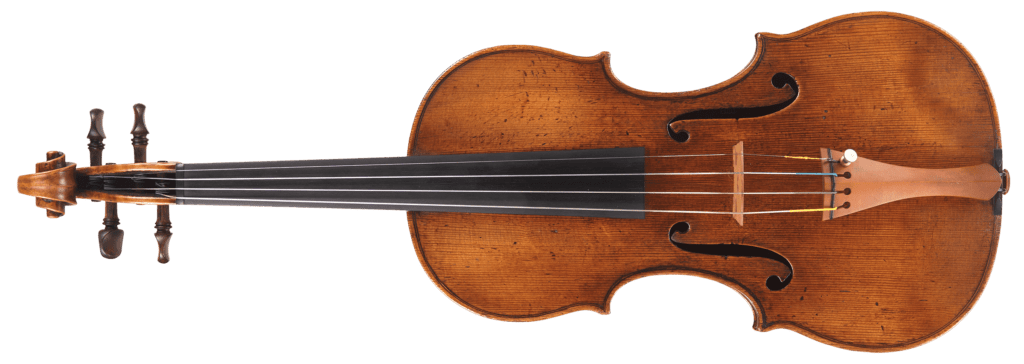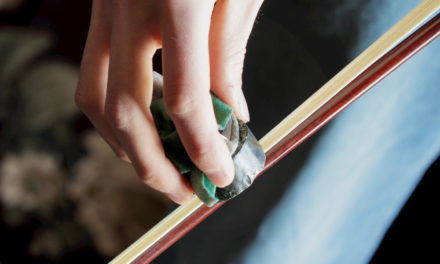Even people who know nothing about the violin know the name of its most famous maker: “Stradivarius” is a metaphor for objects of priceless value and incomparable quality. Antonio Stradivari, who lived from 1644-1737, is the most renowned member of a family of luthiers, and made the best of the violins, violas, and cellos that bear the Stradivari name.
During his working life in 17th and 18th century Europe, he was able to produce around 2000 instruments, of which only some 600 Violins exist today. His exceptional craftsmanship, design and drafting skills quickly earned a reputation amongst the courts and nobility in Europe, with commissions by royalty such as King James II and King Charles III of Spain. That reputation still stands today; the name “Stradivarius” is used to describe priceless value, incredible quality and flawless design. Stradivari can be credited with developing and perfecting the standard design for today’s violin makers, with an elongated body and longer and narrower f-holes, providing more tonal strength and richness than the standard design of his day. He also developed the use of high quality varnish on his instruments, a deep red-orange color unlike the standard gold-colored varnish of the 17th century. Other elements of his work include incredibly detailed and intricate edgework and decoration, strengthened and broadened arching and added thickness to the plates, and a more square appearance to the center bouts. His work was of exceptional quality, with use of only the finest maple and varnish material to create a powerful, precise sound and unmistakable physical beauty.

But almost as highly-treasured by musicians and collectors are instruments made by the Guarneri family. The most famous member of that clan is Bartolomeo Giuseppe, who signed his creations with his name and the initials “IHS” – a monogram of the name Jesus Christ – which is why he, and his fiddles, are called Guarneri del Gesù.
Guarneri’s work was rougher in design, but much more adventurous with great expression of artistic and experimental nature. Unlike Stradivari, Guarneri had little influence with the European courts, making his violins more popular with the common musician who required a great sound without the higher cost. Due to his lack of reputation, he worked at a rapid pace to make a living and created over 2000 violins, of which around only 130 exist today (making the originals rarer than an original Stradivari). Elements of his work include adventurous, handsome designs with rugged character and finish, shortened body length, shallow fluting, use of a thicker back plate, and elongated, uneven f-holes (the bass f-hole is often higher than the treble), hook-like corners, and erratically colored varnish. All of these elements make for a deep, beautifully rich sound and dark, limitless tonal palate.

So which is better, the Stradivarius or Guarnerius?
What it truly comes down to is preference. A great analogy for this comparison would be the comparison of White or Red wine, the Guarneri being red wine, with its deep, dark richness; the white wine being the Stradivari, with its light, sweet, precise tone. Though possessing a limitless tonal variance, the Guarneri produces a deeper, darker, more powerful sound compared to the silky, refined tone of the Stradivari. This causes more power and body within the lower range; famed violinist Rachel Barton Pine describes her preference for the Guarneri: “They can be as sweet as a Stradivari when they need to be, but they’ve also got guts!” Some players also may prefer the Guarneri due to its shortened body length and as a result, its shorter scale length (which some believe creates greater ease while playing). On the other hand, some players prefer the longer body of the Stradivari, which my result in a “better fit” to the curvature of the body and making the overall feel of the instrument more comfortable. The Stradivari’s sound is described as more “direct and precise”, responding to the slightest touch with refined direction and elegance, much like a high-performance sports car. The player who prefers more precision and refinement might prefer this over the Guarneri which, while providing body and power, provides less precision.
Finding original violins by both makers today is very rare, and they can cost millions of dollars. If you want to take the incredible opportunity to play either of these instruments (which you should!), you would most likely invest in a newer model based off of these original designs. When it comes to these models, Guarneris can be much harder to duplicate due to their very individualistic and unique designs, causing newer models to be much harder to pull off. For these newer models, Stradivaris are easier to duplicate and perhaps more true to the original design. When it comes to cost of these models, neither necessarily costs more than the other; either can be found for under $500 or over $10,000. What dictates the price of the model is its maker, age, country of origin and condition.
Whichever fits you best, you should absolutely take the opportunity to try out either or both of these beautiful, incredibly crafted instruments! Whether old original or modern copy, there are few more wonderful experiences than being able to produce a beautiful, powerful tone on a handcrafted violin made by a fine maker.
reference: https://www.violinpros.com/blogs/resources/stradivari-vs-guarneri-whats-the-difference






